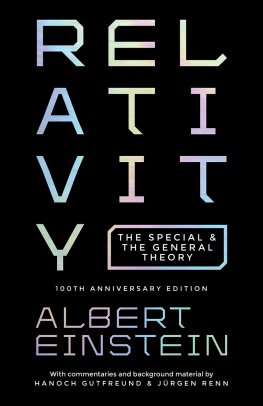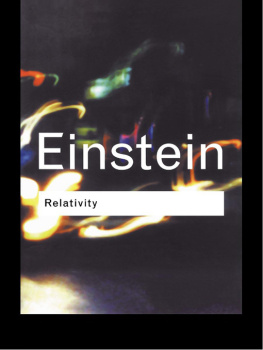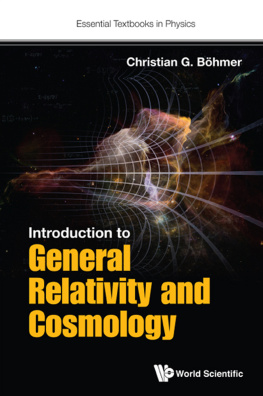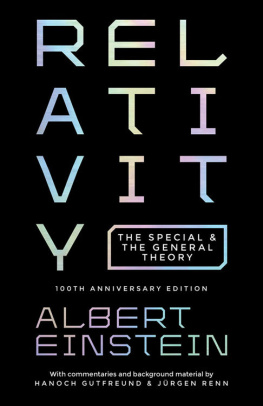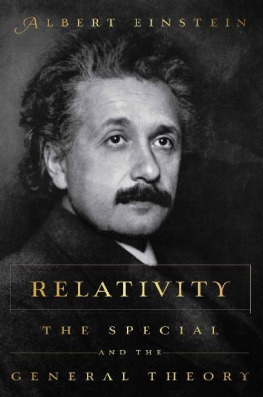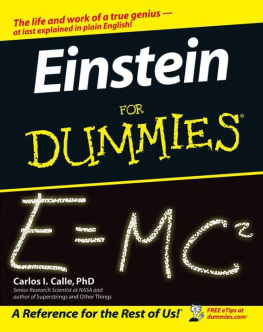
RELATIVITY
THE SPECIAL AND THE GENERAL THEORY 100TH ANNIVERSARY EDITION
PRINCETON UNIVERSITY PRESS
Princeton and Oxford
RELATIVITY
THE SPECIAL & THE GENERAL THEORY
100TH ANNIVERSARY EDITION
With commentaries and background material
by Hanoch Gutfreund and Jrgen Renn
ALBERT EINSTEIN
Copyright 2015 by Princeton University Press and The Hebrew University of Jerusalem
The translation by Robert W. Lawson is reprinted from Relativity: The Special and the General Theory (Crown, 1961 The Hebrew University of Jerusalem)
Requests for permission to reproduce material from this work should be sent to Permissions, Princeton University Press
Published by Princeton University Press, 41 William Street, Princeton, New Jersey 08540
In the United Kingdom: Princeton University Press, 6 Oxford Street, Woodstock, Oxfordshire OX20 1TW
press.princeton.edu
All Rights Reserved
ISBN 978-0-691-16633-9
Library of Congress Control Number: 2015934627
British Library Cataloging-in-Publication Data is available
This book has been composed in Caslon 540 LT Std, Montserrat, and Relativ.
Printed on acid-free paper.
Printed in the United States of America
10 9 8 7 6 5 4 3 2 1
CONTENTS
The great success in gravitation pleases me immensely. I am seriously contemplating writing a book in the near future on special and general relativity theory, although, as with all things that are not supported by a fervent wish, I am having difficulty getting started. But if I do not do so, the theory will not be understood, as simple though it basically is.
ALBERT EINSTEIN TO MICHELE BESSO, 3 JANUARY 1916
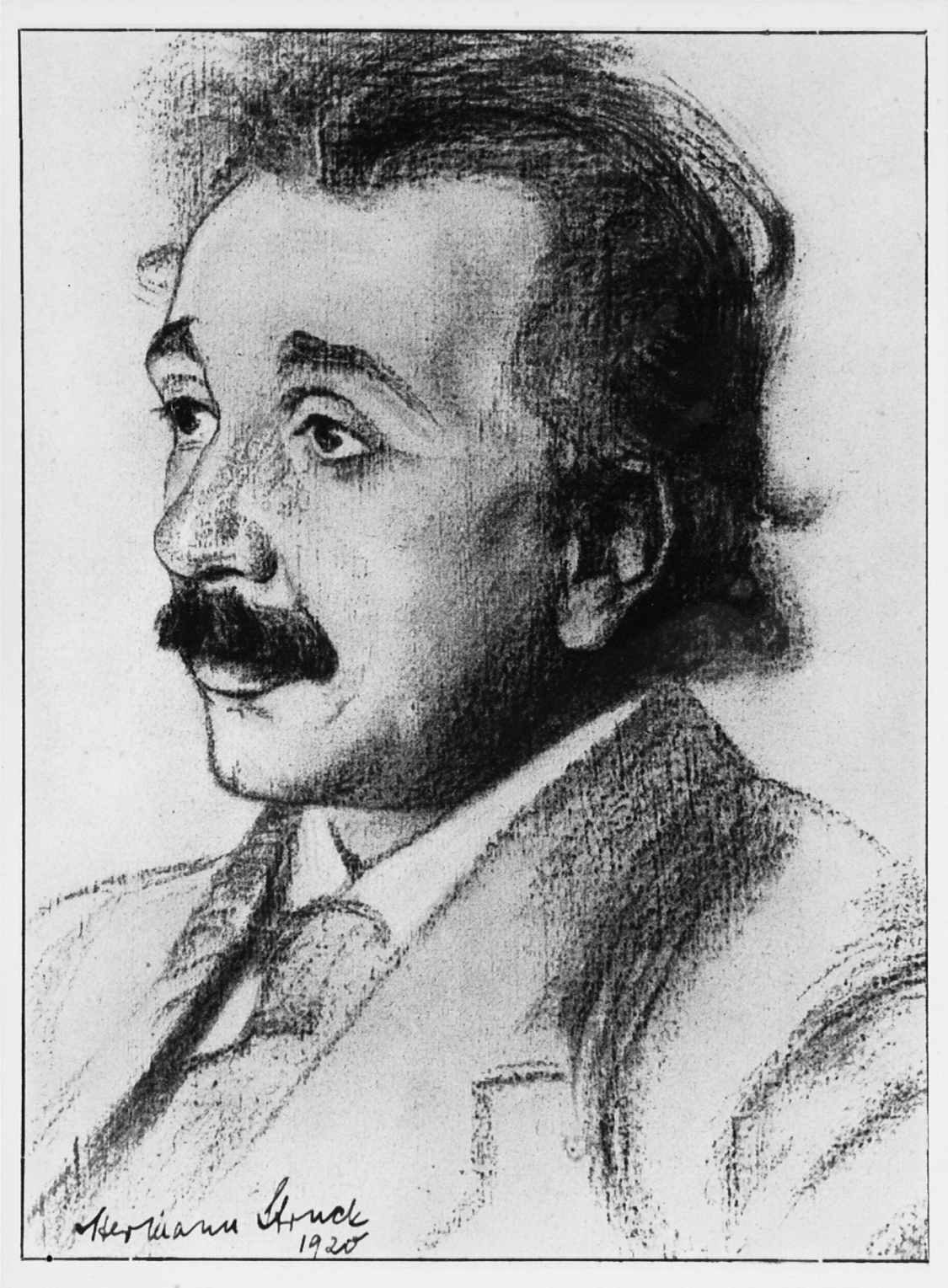
An etching of Albert Einstein by Hermann Struck, a Berlin artist who produced many such portraits of leading individuals of his time. This etching was included in several early foreign-language editions of the booklet.
INTRODUCTION
A fter submitting the final version of his general theory of relativity in November 1915, Einstein began to write a comprehensive summary of the theory for the scientific community. At that time he was already thinking about writing a popular book on relativityboth the special and the generalas he indicated in a letter to his close friend Michele Besso, quoted in the epigraph. Einstein completed the manuscript in December, and the booklet (as he referred to it) Relativity: The Special and the General Theory (A Popular Account) was published in German in the spring of 1917.
Einstein believed that the laws of nature could be formulated in a number of simple basic principles, and this quest for simplicity characterized his scientific activities. He also believed that it was his duty to explain these principles in simple terms to the general public and to convey the happiness and satisfaction that understanding them can generate. As Einstein stated in the short introduction to his booklet, he spared himself no pains in his endeavour to present the main ideas in the simplest and most intelligible form, (p. 10) yet the book is not popular in the usual sense. It may be popular in its format, in its dialogue with the reader, in its examples from daily life, and in the lack of mathematical formulas, but it does not compromise on scientific rigor. The reader soon discovers that an intellectual effort is required to follow the flow of Einsteins thoughts and arguments.
In his brief introduction, Einstein also said that in the interest of clarity, he repeated himself frequently without paying the slightest attention to the elegance of the presentation. To justify this approach, Einstein referred to the brilliant physicist Ludwig Boltzmann, according to whom, matters of elegance ought to be left to the tailor and to the cobbler. Despite this assertion, the booklet is written with sophistication and elegance. The path from Newtonian mechanics to special relativity and then to general relativityfollowed by its immediate consequencesemerges as an exciting intellectual odyssey. There is hardly any trace of Einsteins own bumpy road or of the difficulties he encountered on the way to this achievement.
However, Einstein was not happy with the result. In a letter to Besso he wrote: The description has turned out quite wooden. In the future, I shall leave writing to someone else whose speech comes more easily than mine and whose body is more in order.
Despite Einsteins self-criticism the booklet was a great success: 14 German editions appeared between 1917 and 1922, and a total of 15 were published in German during his lifetime. Strangely, though, the 15th edition, which appeared in 1954, was called the 16th instead. After the confirmation of the bending of light, the booklet was also published in many foreign languages.
In 1947, shortly after World War II and 30 years after publication of the first German edition, Einstein was approached by the publishing company Vieweg, which held the publication rights to the first edition, with a proposal to publish a new edition in German. His response contained only two sentences in which he categorically rejected this proposal: After the mass-murder of my Jewish brethren by the Germans, I do not wish any of my publications to be issued in Germany. Einsteins attitude softened over the years, and he approved the 1954 German edition, the last to appear in his lifetime.
Einsteins booklet is a unique document in the history of science writing. It is an attempt to enable the general reader with no background in physics to grasp and appreciate the grandeur of one of the most sophisticated intellectual achievements of the human mind and thereby to grant him or her, as Einstein puts it, a few happy hours of suggestive thought. This goal may have been achieved in at least one case (see the letter from Walter Rathenau in the appended documents). Einstein appeals to the readers intuition and does not assume that he or she has any previous knowledge of the subject matter. Familiar metaphors include train carriages and embankments. Einstein often poses a question to the readerwhich he then answers himself or in the name of the reader, taking both sides of a Platonic dialoguewhich invites the reader to actively participate in the thought process.
Einstein maintained a close interest in the publication process and corresponded extensively with the publisher about the consecutive editions, translations into other languages, and granting rights to foreign publishers. He made stylistic and textual changes from one edition to the next, occasionally adding whole chapters and new appendixes. Thus, of the present version of the bookletcomprising sections 3032, which deal with the universe as a wholewas added to the third edition in 1918. To the same edition Einstein also added the first two appendixes: Simple Derivation of the Lorentz Transformation (as a supplement to section 11) and Minkowskis Four-Dimensional Space (World) (as a supplement to section 17).
The appendix The Experimental Confirmation of the General Theory of Relativity was written for the first English edition (1920) at the request of the translator. It discusses the three classical experimental tests of general relativity: the precession of the perihelion (the point of closest approach to the sun) of the planet Mercury, the deflection of light by the gravitational field, and the increased wavelength of spectral lines in a gravitational field (the gravitational redshift). This appendix was also included in the 10th German edition in 1920. The fourth appendix, The Structure of Space according to the General Theory of Relativity, appeared first in the 14th English edition (1946) and was later included in the 1954 German edition. It is a supplement to section 32 and deals with the cosmological question of the nature of the universe. The term
Next page
